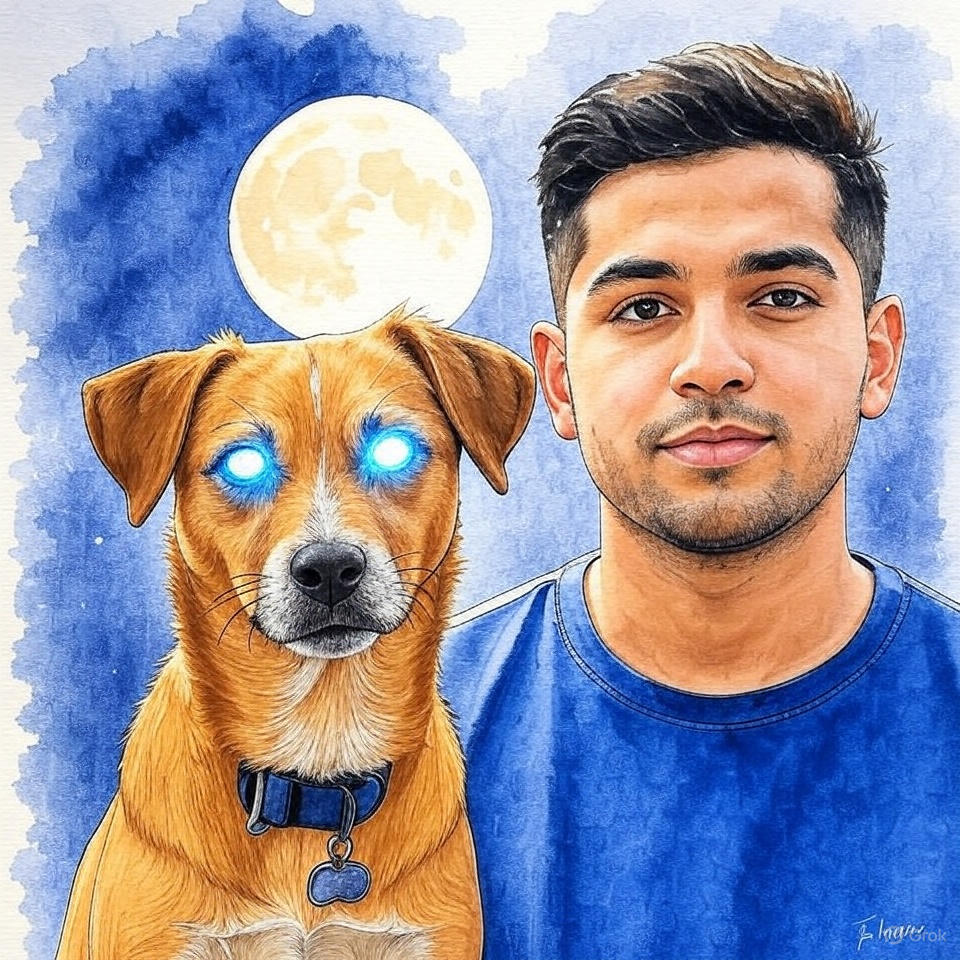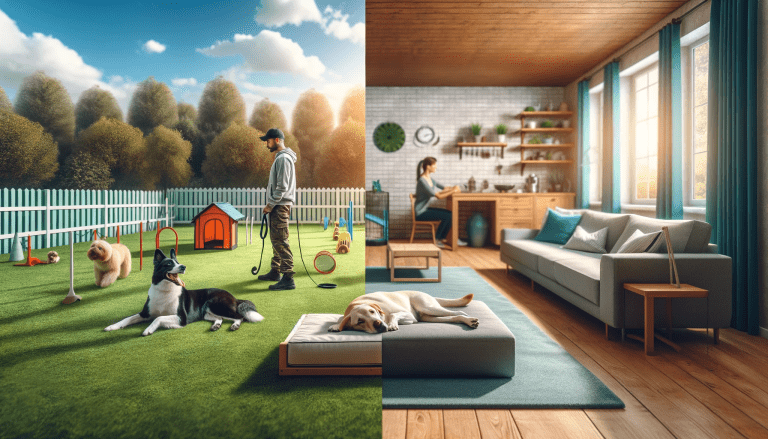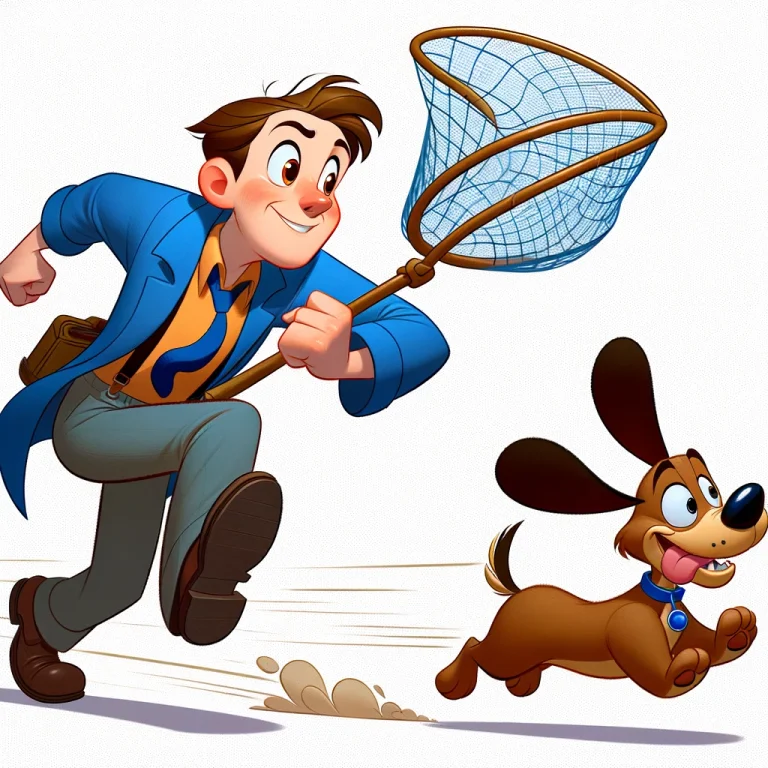Dog vs. Human Eyesight: A Science-Backed Comparison
Ever wondered how your dog sees the world compared to you? This blog dives into the fascinating science behind dog and human eyesight, exploring how each species perceives colors, details, and motion. Packed with research-backed insights, this comparison will captivate pet owners and science enthusiasts alike.
How Vision Works: The Basics
Both dogs and humans rely on their eyes to process light, but the mechanics differ. The retina, a layer at the back of the eye, contains photoreceptors: rods for low-light vision and cones for color and detail.
- Humans: Our eyes have a high cone density, especially in the fovea, giving us sharp, detailed vision and vibrant colors.
- Dogs: Dogs have more rods than cones, prioritizing motion detection and night vision over fine details, per a 2013 study in Visual Neuroscience.
Key Terms: Dog vision, human eyesight, retina function
Color Perception: Can Dogs See Colors?
A common myth is that dogs see only in black and white. Science says otherwise:
- Humans: We’re trichromatic, with three cone types detecting red, green, and blue, allowing us to see millions of colors.
- Dogs: Dogs are dichromatic, with cones for blue and yellow-green. They can’t see red or green hues, similar to human red-green color blindness, according to Visual Neuroscience (2013). A red toy on green grass might look gray to a dog, but blue stands out.
Example: Choose blue or yellow toys for your dog—they’ll spot them easily!
Search Terms: Dog color vision, do dogs see color, dog color blindness
Visual Acuity: Who Sees Sharper?
Visual acuity measures how clearly we see details:
- Humans: With 20/20 vision, we see crisp details at 20 feet, ideal for reading or spotting distant objects.
- Dogs: Dogs have roughly 20/75 vision, per a 1989 study in Journal of the American Veterinary Medical Association. The world looks blurrier to them, and they rely on motion to identify objects.
| Feature | Human Vision | Dog Vision |
|---|---|---|
| Visual Acuity | 20/20 (sharp) | 20/75 (blurrier) |
| Color Perception | Trichromatic (full) | Dichromatic (limited) |
| Field of View | ~180° | ~240° |
Search Terms: Dog visual acuity, human vision clarity
Field of View: Who Sees More?
Peripheral vision varies significantly:
- Humans: Our forward-facing eyes give us a 180-degree field of view, optimized for depth perception.
- Dogs: With eyes positioned more to the sides, dogs enjoy a 240-degree field of view, ideal for spotting movement, as noted in Veterinary Ophthalmology (2014).
Search Terms: Dog peripheral vision, human field of view
Low-Light Vision: Seeing in the Dark
Dogs shine in dim conditions:
- Humans: Our cone-heavy eyes need ample light for clear vision.
- Dogs: More rods and a reflective tapetum lucidum layer let dogs see in light five times dimmer than humans can handle, per Journal of Veterinary Science (2017). This explains their glowing eyes at night.
Search Terms: Can dogs see in the dark, dog night vision
Motion Detection: Dogs’ Edge
Dogs are wired to spot movement:
- Humans: We focus better on stationary objects but miss subtle motion.
- Dogs: A 2006 Journal of Vision study found dogs excel at detecting moving objects, especially in low light or at a distance, thanks to their rod-heavy retinas.
Search Terms: Dog motion detection, human vs. dog vision
Practical Tips for Pet Owners
Understanding your dog’s vision can enhance training and play:
- Toy Selection: Choose blue or yellow toys for visibility.
- Training: Use hand signals or moving objects, as dogs respond to motion.
- Night Safety: Add reflective gear for visibility, even if dogs navigate well in the dark.
Search Terms: Dog training tips, pet toy colors
Conclusion: Different Eyes, Different Worlds
Humans see a colorful, detailed world, while dogs excel in motion detection and low-light vision. These differences, rooted in evolution, shape how each navigates their environment. By understanding your dog’s perspective, you can strengthen your bond and make playtime more engaging.
Call to Action: Share this with fellow dog lovers! Curious about more pet science? Explore our other posts on animal behavior.
FAQ
Can dogs see in complete darkness? No, but their rod-heavy eyes and tapetum lucidum make them far better at seeing in low light than humans.
What colors do dogs see best? Dogs see blue and yellow hues clearly but struggle with red and green.
Why do dogs’ eyes glow at night? The tapetum lucidum reflects light, enhancing night vision and causing the glow.
Search Terms for FAQ: Dog night vision, dog eye glow, best colors for dogs







